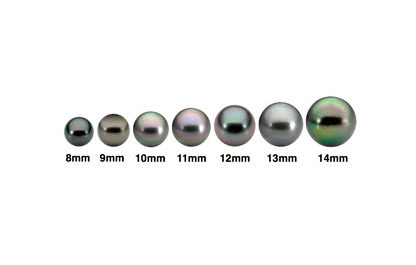The Pearl of Tahiti
The Tahitian pearl is a cultured pearl cultivated exclusively in Polynesian lagoons, within the black-lipped oyster, also known as Pinctada Margaritifera. It reflects the beauty of the Polynesian landscapes. Its shape and roundness exude sensuality. Created in the warm waters of the Pacific, our pearls come more specifically from the Tuamotu and Gambier Islands.
In order to preserve the image and quality of the Tahitian cultured pearl, the Polynesian government prohibits treating the color or recutting the pearls.
These regulations have allowed the Tahitian pearl to become one of the most protected pearls and consequently one of the most sought-after pearls in the world.
Discover the shapes
Tahitian pearls come in a multitude of shapes, generally divided into 5 categories:
- Round or semi-round
- Oval or button-shaped
- Pear-shaped or teardrop-shaped
- Circled
- Semi-baroque or baroque

While round pearls have long been the most popular with buyers, other categories are attracting more and more designers, who are inspired by their original yet natural shapes to design unique jewelry.
The sizes
Pearls with a large diameter are generally more expensive. Larger pearls are indeed more difficult to cultivate; given their rarity, they are more valuable. Pearls are measured in millimeters (mm) according to their diameter. A Tahitian pearl measures between 7 mm and 14 mm. Pearls larger than 12 mm are rarer and represent a tiny fraction of the harvest.

The colors
The color palette of Tahitian pearls varies from the purest white to the deepest black, passing through all shades of grey, peacock green, aubergine, blue and even the rainbow.
These colours are natural and vary depending on the origin of the graft introduced at the same time as the nucleus, but also depending on the farm or the lagoon.
They are not a criterion of quality and everyone can choose according to their tastes.

Classification of Tahitian pearls
Tahitian pearls are sorted according to an official classification that takes into account their shape, size, and the number and arrangement of surface imperfections. More subtle criteria such as luster and brilliance are also used.
In summary, here is a summary table

At the international level, the classification is named differently.
In my catalog and the descriptions of my jewelry/pearls, I list the Tahitian classification first and the international classification in parentheses. Here is the equivalency table:





